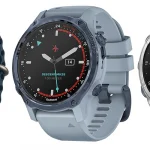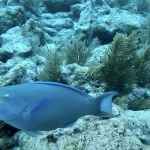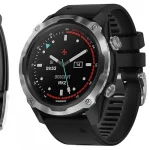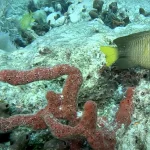Understanding Key Largo’s Diving Temperatures
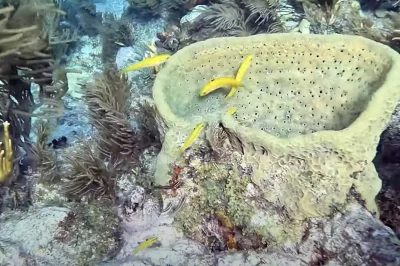
Table of Contents
- Understanding Key Largo’s Diving Temperatures
- The Science of Thermal Protection
- Why More Divers Choose to Skip the Wetsuit
- Common Mistakes and How to Avoid Them
- Thermal Control and Energy Conservation
- The Unexpected Benefits of Wearing a Wetsuit
- Tailoring Your Gear for Comfort
- Predicting the Future of Dive Gear Innovation
Introduction
Diving into the warm waters of Key Largo sounds like a dream. But even when water temperatures are balmy at 85°F, the question arises: is a wetsuit necessary? This blog post dives into the pros and cons of wearing a wetsuit in these conditions, offering insights rooted in data and experience to help you make an informed decision for your diving adventure.
Understanding Key Largo’s Diving Temperatures
Wetsuits provide essential thermal protection for divers by utilising specific design principles and materials that regulate body temperature even in warmer conditions, such as those experienced in Key Largo during the summer. The primary mechanism by which wetsuits maintain warmth is through the insulation created by a thin layer of water trapped next to the skin. This water quickly absorbs body heat, forming a barrier that significantly reduces heat loss through conduction and convection. Neoprene, the most common material used in wetsuits, contains a closed-cell structure with air or nitrogen, further minimising thermal loss by trapping heat.
A critical aspect of thermal protection involves the depth and duration of dives. In deeper waters, neoprene compression can reduce its insulating properties. Thus, thicker wetsuits (5 to 7 mm) are often recommended for deeper dives, maintaining effective insulation under pressure. Additionally, prolonged exposure to water, even at warmer temperatures, can lead to a gradual drop in body temperature, increasing the risk of hypothermia. Therefore, thicker suits help retain a larger volume of warm water, enhancing thermal insulation.
Recent advancements in wetsuit materials, such as Hollow Glass Microspheres (HGM), have further improved thermal resistance at greater depths. HGM composites help maintain insulation by resisting compression that typically occurs in traditional neoprene, ensuring adequate protection as divers descend into cooler water.
While surface water in Key Largo may be warm, exploring deeper reef areas or shipwrecks can expose divers to colder thermoclines. A wetsuit thickness of 3 to 5 mm is generally adequate for balancing flexibility and protection. Importantly, a snug fit is crucial; it minimises water intake and reduces the potential for heat loss through convection, ensuring divers remain warm and comfortable during extended periods in the water.
The Science of Thermal Protection
Wetsuits may not be strictly necessary for warm-water scuba diving, but their use ultimately depends on personal comfort, water temperature, and the specific dive location. Here’s a comprehensive look at the key considerations and misconceptions surrounding wetsuit use in places like Key Largo.
Necessity and Preferences
While wetsuits are often standard in rental gear, many divers prefer wearing rashguards or dive skins in tropical conditions to avoid overheating. These options provide adequate sun protection and reduce the risk of minor abrasions. Conversely, some divers may opt for minimal coverage, such as shorty wetsuits, which can offer increased thermal comfort during longer dives while still providing limited protection against the elements.
Common Misconceptions
A widely held myth suggests that wetsuits function by trapping water against the skin, which warms by body heat. However, this is ineffective in warmer waters, where the body cannot sustain heat without significant loss. Instead, wetsuits primarily provide insulation through the neoprene’s thickness and seam construction, minimising water flow and heat loss.
Recommended Thickness and Styles
- Thickness:
- Warm (~75°F/24°C+): 3mm shorty or thinner
- Moderate (~70°F/21°C): 3–5mm full suit
- Popular Styles:
- Shorty wetsuits: Ideal for warm waters, covering arms and legs with 3mm thickness.
- Full-length suits: Common in cooler tropical areas.
- Layering: Some divers wear a 3mm shorty over a dive skin for added comfort and flexibility.
Key Considerations
- Water Conditions: Thick suits are generally unnecessary in warm, tropical locations, such as dives around Key Largo.
- Diver Preference: Many divers find that thin suits or rashguards are sufficient for sun protection and minor abrasions.
- Seal Quality: Proper seals at the neck, wrists, and ankles minimise heat loss, particularly in cooler waters.
While wetsuits may not be mandatory for all warm-water dives, they are a practical option for many divers looking for additional comfort and protection during their underwater adventures.
Why More Divers Choose to Skip the Wetsuit
When diving in Key Largo, divers often make key mistakes related to choosing the right thermal protection. Understanding these errors can significantly enhance both enjoyment and safety.
Ignoring Water Temperature and Activity Level
Divers commonly underestimate thermal protection’s importance even in warmer waters. A 1–3 mm wetsuit is generally recommended to mitigate convective heat loss, which can be substantial with prolonged exposure. In contrast, using overly thick suits (such as 5 mm or more) in typical Key Largo temperatures can lead to overheating and discomfort.
Improper Fit and Sizing
Wetsuits must fit snugly to be effective. A poorly fitting wetsuit allows too much water circulation, quickly leading to heat loss. A tighter suit traps a thin layer of water against the skin, allowing the body to warm it up efficiently. Loose suits, however, can flush warmth away, forcing the body to expend more energy to maintain temperature.
Relying on Ineffective Methods
Some divers mistakenly rely on urinating in their wetsuit for warmth. While this may provide brief comfort, rapid heat loss follows once the urine cools, reducing overall thermal efficiency.
Overlooking Protective Accessories
Though items like hoods, gloves, and booties may seem unnecessary in warmer waters, they remain essential in colder conditions. Divers should avoid wearing too many accessories not providing significant benefits in Key Largo’s warmer waters, as this may hinder mobility and comfort.
Misusing Dry Suits in Warm Waters
Dry suits are primarily designed for cold environments. In warmer climates like Key Largo, wetsuits offer a better balance of thermal protection and comfort by allowing for heat dissipation without dry suits’ bulkiness.
Key Takeaways
- Use a 1–3 mm wetsuit for comfortable thermal protection in moderate temperatures.
- Prioritise a snug fit to help maintain body warmth.
- Avoid dry suits unless diving in extremely cold conditions.
Common Mistakes and How to Avoid Them
Understanding the Impact of Thermal Protection on Dive Endurance
Thermal protection plays a vital role in scuba diving, especially in warmer waters like those around Key Largo, where temperatures can reach 85°F. Although many divers may choose to forgo wetsuits, understanding the physiological implications of thermal management can enhance diving experience and endurance.
One crucial aspect of thermal protection is its ability to reduce metabolic stress. When divers are exposed to cooler water temperatures, the body expends additional energy to maintain core temperature. This increased metabolic rate diverts energy that could be utilised for diving activities, ultimately leading to quicker fatigue. Even mild hypothermia can impair cognitive function and decision-making, making it essential for divers to maintain a stable thermal state during their dives.
There are several mechanisms through which thermal protection minimises heat loss:
- Breathing Gas: In open-circuit systems, inhaled gas is often cold and dry, leading to significant heat loss through evaporation. This effect becomes pronounced as divers go deeper, where gas density increases, exacerbating the cooling effect.
- Water Environment: The rate of heat loss is directly proportional to the time spent submerged and the surrounding water temperature. Wetsuits and drysuits serve as effective barriers, lessening this gradient and conserving body heat.
- Rebreathers: These systems recycle warm, humid gas, offering a significant advantage over open-circuit regulators by minimising heat loss.
To maximise energy conservation, divers can employ several strategies:
- Layered Thermal Systems: Utilising wetsuits or heated gear creates a thermal barrier that helps retain body heat.
- System Choice: Opting for rebreathers can reduce the energy needed to warm inhaled gases, improving overall thermal efficiency.
- Controlled Exertion: Managing physical activity during dives helps minimise excessive movement, which can lead to accelerated cooling and increased energy expenditure.
While the primary focus is on energy conservation, improper thermal management can also escalate the risk of decompression sickness, highlighting the importance of maintaining optimal thermal conditions throughout the dive. Consequently, effective thermal protection conserves energy and enhances cognitive function, making it an indispensable element of a safe and productive diving experience.
Thermal Control and Energy Conservation
Emerging Trends in Wetsuit Technology
Modern advancements in wetsuit technology reshape how divers experience warm-water conditions like those in Key Largo. Here are some significant trends enhancing comfort, mobility, and environmental responsibility.
Advancements in Neoprene Technology
Today’s wetsuits feature limestone-based neoprene and smooth mesh liners, improving both flexibility and durability while minimising environmental impact. These innovations allow for a lighter weight and enhanced mobility, crucial for warm-water dives where heavy insulation is not necessary.
Eco-Friendly Materials and Practices
More brands are adopting sustainable production practices, utilising recycled materials and water-based adhesives. These methods significantly reduce environmental harm, making it easier for divers who prioritise eco-conscious practices to enjoy their adventures without compromising the ocean’s health.
Custom Fit and Personalisation
Manufacturers increasingly focus on tailored sizing to minimise drag and improve comfort during lengthy dives. A snug, well-fitting wetsuit enhances energy efficiency and is also beneficial in warm waters, where stamina is critical for exploring vibrant underwater landscapes.
Increased Flexibility
High-end wetsuits like the Rip Curl Flashbomb Fusion utilise articulated seams and stretch-enhancing paneling, allowing for fluid underwater movement. This flexibility reduces fatigue and enhances the ability to navigate through coral reefs and underwater terrains effectively.
Lightweight Construction
The trend toward slimmer profiles and breathable materials simplifies the suit’s design, making them easier to pack and wear in tropical climates. This means less hassle for divers when entering or exiting the water, facilitating a more enjoyable diving experience.
Proven Technical Carryover
While innovation is key, many brands refine established technologies, such as thermal-regulation patterns, especially in collections like Rip Curl’s FW25. These features ensure reliability and comfort even in varying water temperatures.
These evolving trends in wetsuit technology prioritise mobility, environmental stewardship, and precision engineering, addressing the unique demands of warm-water diving, where agility and sustainability are paramount.
The Unexpected Benefits of Wearing a Wetsuit
For summer diving in Key Largo, where water temperatures can reach up to 85°F (30°C), wearing a wetsuit isn’t strictly necessary for thermal protection. However, many divers might still opt for lightweight options due to several other benefits.
Key Considerations
- Thermal Insulation:
- In water temperatures above 76°F (24°C), it’s common for divers to prefer swimwear or rash guards, as the risk of hypothermia is minimal.
- Some divers may choose to wear thinner options, such as 0.5mm microprene suits or spring suits if engaging in multiple dives where extended exposure could lead to a slight chill.
- Non-Thermal Benefits:
- UV Protection: A wetsuit provides a barrier against harmful UV rays, reducing sun exposure during surface intervals.
- Abrasion and Sting Resistance: Wearing a wetsuit can help protect against coral scrapes, jellyfish stings, and gear-related abrasions.
- Perceived Comfort: Some divers feel more comfortable and secure wearing a lightweight layer, adding a psychological sense of warmth and protection.
Seasonal Recommendations
| Time of Year | Water Temp | Typical Gear |
|---|---|---|
| Summer (May-Oct) | 78–86°F | Rash guards, swimwear, or thin 0.5mm suits |
| Winter | 68–76°F | 3–5mm wetsuits required |
Ultimately, in 85°F water, it’s advisable to focus on comfort and protection rather than just thermal insulation. If planning on diving consecutively, a thin wetsuit may be beneficial to maintain warmth during transitions, but the risk of thermal stress is generally low in these warm conditions.
Tailoring Your Gear for Comfort
For scuba diving in Key Largo during the summer months, thermal protection requirements are minimal due to the warm water temperatures. Here’s a breakdown of key considerations:
Water Temperature
Summer water temperatures typically range from 78°F to 86°F (25°C to 30°C), which is warm enough that most divers opt for swimsuits or dive skins instead of wetsuits. Some may still prefer thin rash guards (1–2 mm) for sun protection or to guard against potential abrasions from marine life such as jellyfish or fire coral.
Seasonal Recommendations
- Wetsuits: Not necessary during summer, as temperatures exceed the 76°F (24°C) threshold where wetsuits become advisable.
- Alternatives: Dive skins, rash guards, or lightweight neoprene shorts offer comfort without significant thermal insulation.
- Environmental Considerations: Although the water is warm, divers should still protect against Ultraviolet (UV) exposure and minor abrasions.
Marine Life and Visibility
- Summer Marine Life: The warm conditions attract an abundance of species, including sea turtles and colourful tropical fish.
- Weather Impact: Summer can bring unpredictable weather, such as thunderstorms, which may temporarily reduce visibility.
In summary, thermal protection is generally unnecessary in summer; however, lightweight protective gear, including dive skins and rash guards, is advisable for UV protection and to mitigate minor stings from marine creatures.
Predicting the Future of Dive Gear Innovation
Understanding Wetsuit Necessity in Key Largo’s Summer Waters
When it comes to scuba diving in Key Largo during the summer, with water temperatures hovering around 85°F (29°C), deciding whether to wear a wetsuit can be a nuanced choice. Generally speaking, for many divers, a wetsuit is not considered essential in these warm waters. However, this decision should also consider several factors, including personal comfort and diving conditions.
During summer months, most divers choose to dive without wetsuits, opting instead for alternatives such as dive skins or rash guards. These lighter options provide some degree of protection from sunburn and stings while still allowing the body to maintain a comfortable temperature in warmer waters. The general consensus is that wetsuits are typically recommended for temperatures below 76°F (24°C).
Sources
- DPM Diving – Wetsuits and Heat Loss
- PMC – Performance of Wetsuits: A Review
- Custom Wetsuits – How Does a Wetsuit Work?
- ScubaBoard – Advice on Wetsuit for Warm Water Diving
- Scuba Diving – Gear You Need for Warm Water Diving
- Similan Diving Tours – Scuba Diving Wetsuits in Warm Water
- ScubaBoard – Thermal Protection Needed
- TDISDI – Stay Warmer in a Wetsuit

